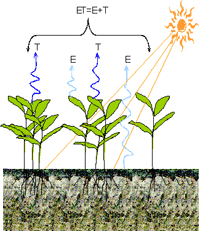Agricultural Research Division of IANR

West Central Research and Extension Center, North Platte
Date of this Version
2012
Citation
Irrigation Science (2012); doi: 10.1007/s00271-012-0334-4
Abstract
A field study was conducted at North Platte, Nebraska in 2007–2009, imposing eight irrigation treatments, ranging from dryland to fully irrigated. Four of the eight treatments allowed for various degrees of water stress only after tasseling and silking. In 2007, corn yield ranged from 8.9 Mg ha−1 with a season total of 41 mm of irrigation water to 11.5 Mg ha−1 for the fully irrigated treatment (264 mm of irrigation water). The treatment with the greatest reduction in irrigation water after tasseling and silking (158 mm) had a mean yield of 10.9 Mg ha−1, only 0.6 Mg ha−1 less than the fully irrigated treatment. In 2009, yields ranged from 12.6 to 13.5 Mg ha−1. There were no significant yield differences between the irrigation treatments for several possible reasons: more in-season precipitation and cooler weather required less irrigation water; much of the irrigation water was applied after the most water-stress sensitive stages of tasseling and silking; and lower atmospheric demand allowed for soil water contents well below 50% management allowed depletion (MAD) not to cause any yield losses.


Comments
Copyright © 2012 Springer-Verlag. Used by permission.